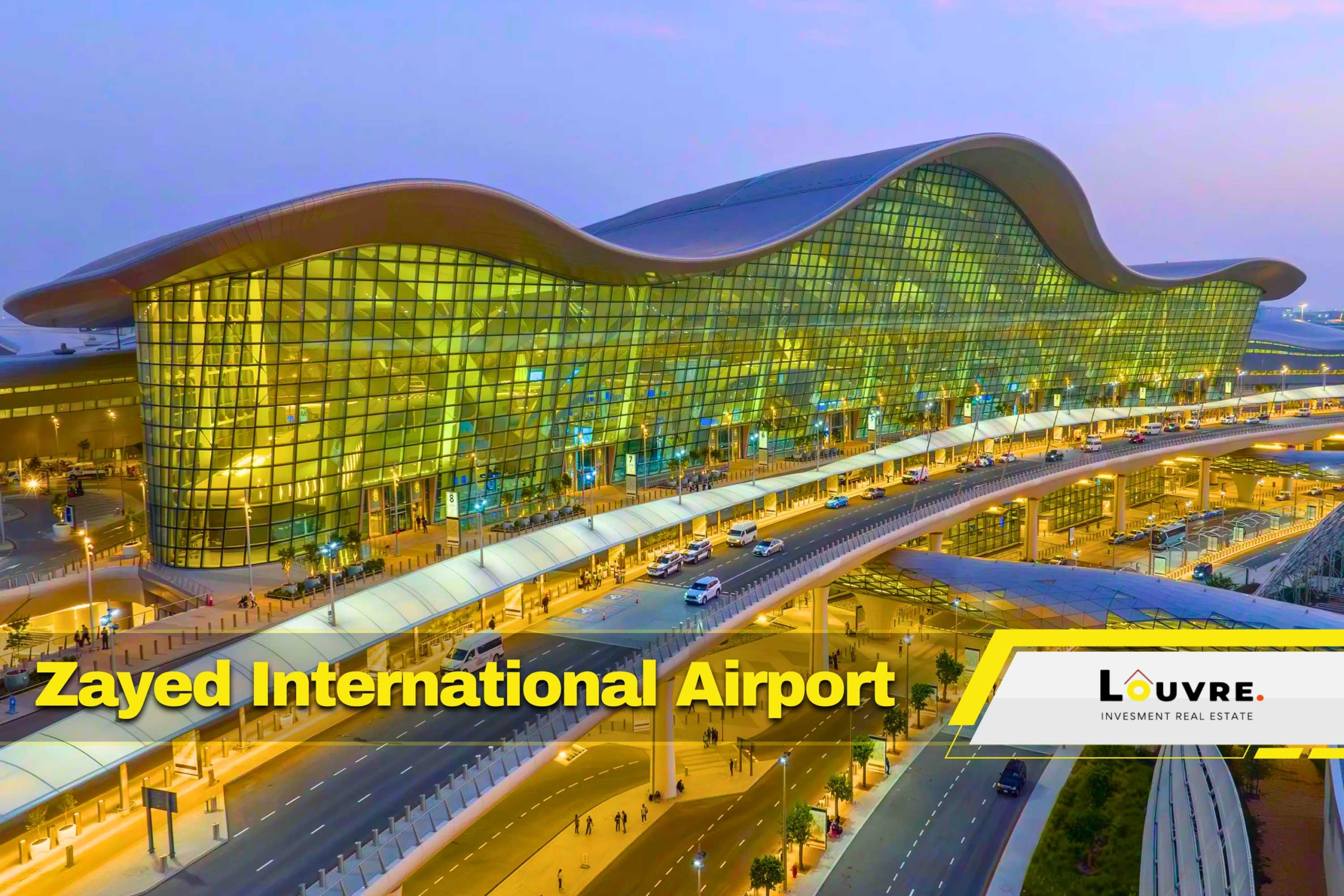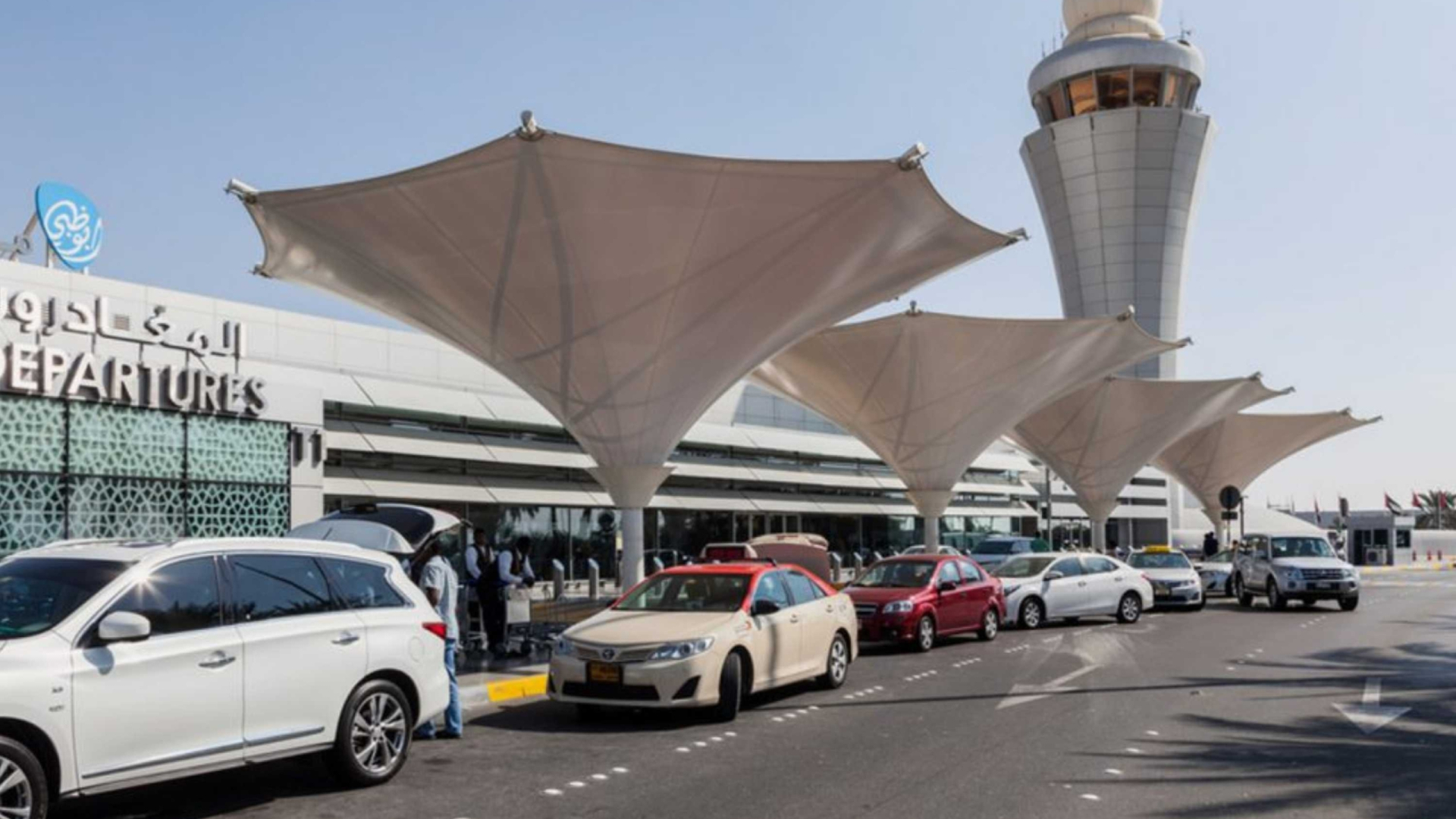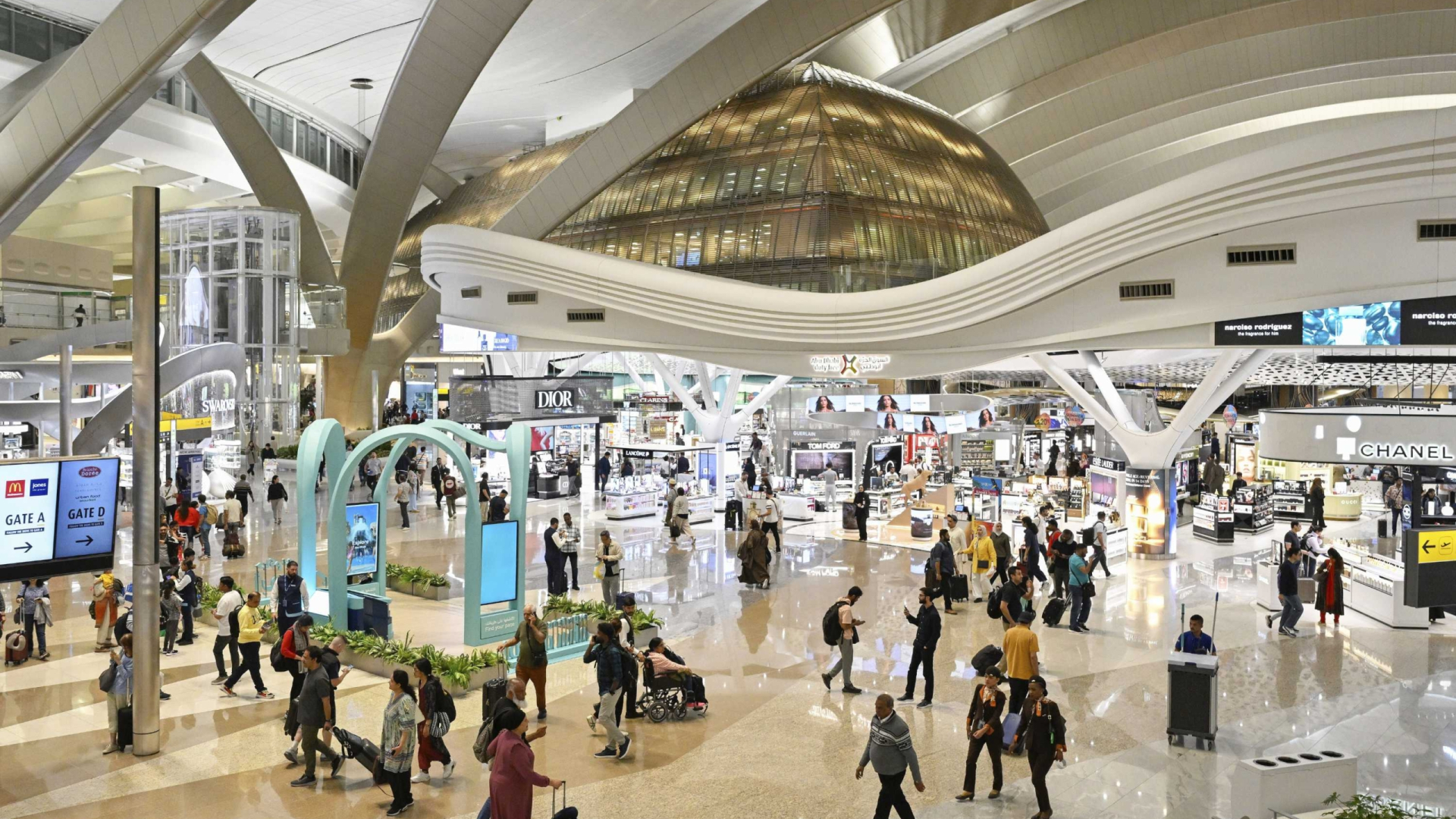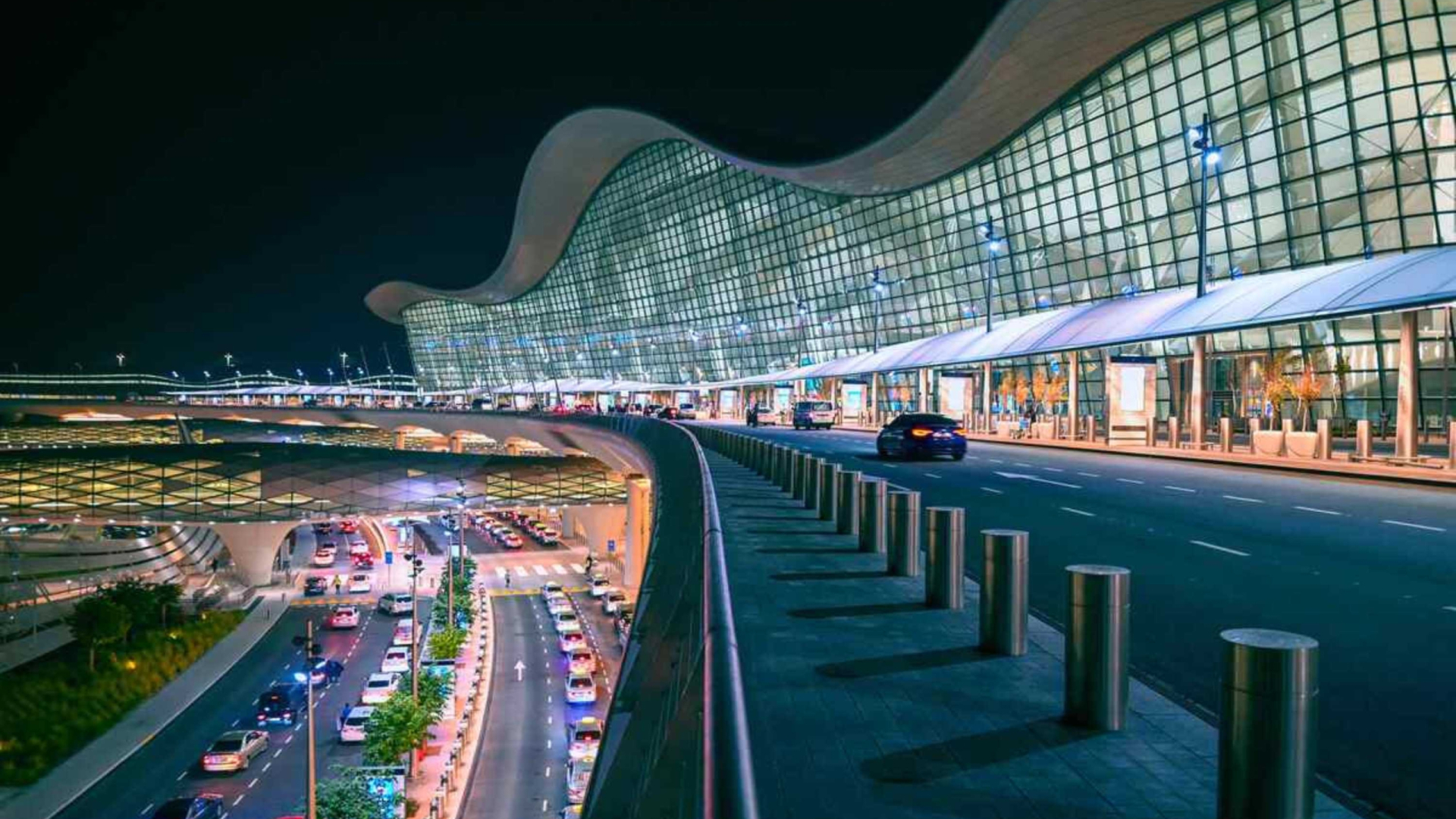Zayed International Airport Abu Dhabi: Complete Guide

Quick Overview About Zayed International Airport Abu Dhabi
Zayed International Airport (AUH) serves as Abu Dhabi's primary aviation gateway and the second-largest airport facility in the United Arab Emirates. Located in the capital's central district opposite Masdar City, the airport processes approximately 45 million passengers annually through its state-of-the-art Terminal A infrastructure. This comprehensive guide provides essential information for navigating airport facilities, transportation options, terminals, and passenger services.
Transportation Access to Zayed International Airport
The airport’s strategic central location enables convenient access through multiple transportation modes, accommodating diverse passenger preferences and budget requirements.

Taxi Services
TransAD operates the official taxi network servicing Zayed International Airport. Passengers can secure transportation through the following methods:
- Direct Booking: Contact TransAD at 600-535353
- On-Demand Service: Hail authorized taxis at designated pickup zones
- Availability: 24/7 operations from arrivals and departures areas
Taxis represent the most direct transportation option for airport access, particularly for passengers with luggage or traveling during non-peak hours.
Public Bus Network
Abu Dhabi’s public bus system provides economical airport connectivity through air-conditioned vehicles operating on fixed routes.
Service Parameters:
- Fare Structure: AED 4 per one-way journey
- Payment Method: Hafilat smart card (required for all public bus transactions)
- Stop Locations: Clearly marked with blue and white signage outside arrivals and departures terminals
- Dubai Connection: Shuttle service to Ibn Battuta Mall Bus Stop available at AED 36 (advance online booking recommended)
The Hafilat smart card can be purchased and loaded at various retail locations throughout Abu Dhabi. This transportation option suits budget-conscious travelers and those familiar with public transit systems.
Public Bus Network
Multiple international and regional car rental operators maintain 24/7 kiosks within the airport facility, providing immediate vehicle access for arriving passengers.
Available Providers:
- Avis
- Dollar Rent a Car
- Europcar
- Hertz
- Thrifty Car Rental
Rental services facilitate autonomous travel for passengers planning extended stays or requiring flexible transportation throughout their visit.
Terminal Infrastructure and Operations

Zayed International Airport operates through a comprehensive terminal system designed to accommodate high passenger volumes while maintaining operational efficiency.
Historical Terminal Development
The airport’s infrastructure evolved through four distinct terminal facilities, reflecting capacity expansion and modernization initiatives.
Terminal 1 (T1) - Decommissioned
Inaugurated in 1974 as Abu Dhabi’s first commercial aviation facility, Terminal 1 featured the distinctive circular gate configuration that defined early airport architecture. The terminal was subdivided into Terminal 1A and Terminal 1B sections to manage passenger flow. Despite modernization efforts including updated check-in systems and arrivals processing, Terminal 1 ceased operations following Terminal A’s completion.
Terminal 2 (T2) - Decommissioned
Positioned west of Terminal 1 in a separate building structure, Terminal 2 represented the airport’s smallest operational facility. Infrastructure included:
- 19 check-in counters
- 3 bus-boarding gates
- 2 baggage claim belts
This terminal has been decommissioned.
Terminal 3 (T3) - Standby Status
Terminal 3 was constructed as a direct expansion of Terminal 1, specifically designed to accommodate Etihad Airways operations and Airbus A380 aircraft. The facility featured:
- Departure gates 28-35 and 58-61
- Extensive duty-free retail zone
- Comprehensive food court
Terminal 3 currently maintains standby operational status for contingency capacity requirements.
Terminal A (Midfield Terminal) - Primary Operations Hub

Terminal A commenced operations on November 1, 2023, representing the airport’s most significant infrastructure investment and technological advancement.
Capacity Specifications:
- Hourly Throughput: 11,000 passengers
- Annual Capacity: 45 million passengers
- Aircraft Accommodation: 59 simultaneous aircraft positions
- Total Area: 700,000 square meters
Advanced Technology Integration
Terminal A incorporates cutting-edge systems designed to optimize passenger processing and reduce congestion:
Smart Travel System Components:
- Self Check-In kiosks
- Self Bag Drop stations
- E-Registration portals
- E-Border Gate automated immigration
- Self Boarding gates
Additional Technologies:
- Facial recognition systems for identity verification
- Advanced baggage handling infrastructure
- Biometric processing to minimize queue times
This technological framework significantly enhances operational efficiency while improving the passenger experience through reduced wait times.
Passenger Facilities and Amenities

Zayed International Airport provides comprehensive facilities designed to address diverse passenger needs throughout the travel journey.
Abu Dhabi Duty Free
Located in the Central Processor area toward Pier D, the duty-free shopping zone offers tax-exempt purchases across multiple product categories:
- International fragrances and cosmetics
- Luxury watches and jewelry
- Regional souvenirs and cultural items
- Toys and children’s products
- Electronics and accessories
The duty-free facility enables passengers to make last-minute purchases or acquire premium goods at competitive pricing.
Retail Shopping Options
Terminal A houses an extensive selection of international luxury brands and local retailers:
Fashion and Accessories:
- Bottega Veneta
- Salvatore Ferragamo
- Fendi
- Hermes Paris
- Kenzo
- Michael Kors
- Ralph Lauren
- Balenciaga
- Bally
- Burberry
- Bvlgari
- Coach
- Gucci
- Longines
General Retail:
- Muji
- WHSmith
- Pure Gold Jewellers
- Bath & Body Works
- Victoria’s Secret
- Footlocker
- Claire’s
Specialty Services:
- Airportray
- Bag Wrap
- Etisalat
- Virgin Mobile
Pharmacy:
- Boots
Premium Airport Lounges
Airport lounges provide elevated hospitality experiences for eligible passengers, featuring complimentary amenities and comfortable environments for pre-flight relaxation.
Lounge Facilities:
- Diamond Lounge: Premium third-party lounge access
- Pearl Lounge: Mid-tier comfort and amenities
- Salam Meet & Assist Services: Personalized airport navigation assistance
- Etihad Airways First Class Lounge: Exclusive facility for Etihad First Class passengers
- Etihad Airways Business Class Lounge: Dedicated space for Etihad Business Class travelers
- Etihad US Premium Lounge: Specialized lounge for US-bound passengers
Standard Lounge Amenities:
- Complimentary food and beverage service
- High-speed Wi-Fi connectivity
- Shower facilities
- Comfortable seating and workspaces
- Business services and charging stations
Lounge access is particularly beneficial for passengers with extended layovers or those seeking respite before long-haul flights.
Dining Establishments
The airport features diverse dining options accommodating quick service requirements and full meal experiences.
Restaurant and Café Selection:
- Bottega Bar
- Brioche Dorée
- Culto Cafe
- Jones The Grocer
- Lulu Roastery
- Meat District
- Pana
- Puro Gusto
- Shawa
- SO! Coffee
- Starbucks
- The Daily
- The Majlis
- Todd English Pub & Market
- Urban Food Market
- Vit
These establishments provide international cuisine options, regional specialties, and familiar chain restaurants to accommodate diverse dietary preferences and time constraints.
Essential Passenger Services
Beyond retail and dining, Zayed International Airport provides fundamental services supporting passenger comfort and operational needs:
- Complimentary Wi-Fi: Full airport coverage with simple connection process
- Prayer Rooms: Multi-faith facilities throughout terminals
- Smoking Rooms: Designated enclosed areas for smokers
- Baby Changing Facilities: Family-friendly amenities in restrooms
- Shower Facilities: Available in lounges and select terminal areas
- ATMs and Currency Exchange: Multiple locations for financial services
- Baggage Wrapping: Protective service for checked luggage
- Porter Service: Assisted luggage handling
- Morafiq Remote Check-In: Off-site check-in service
- Al Ssaada Service Center: Transaction processing and passenger assistance
Frequently Asked Questions
What is the Zayed International Airport code?
The IATA code is “AUH” and the ICAO code is “OMAA”.
How many airports operate in Abu Dhabi?
Five airports serve the Abu Dhabi emirate: Zayed International Airport, Al Ain International Airport, Al Bateen Executive Airport, Sir Bani Yas Island Airport, and Delma Island Airport.
Are hotels available near the airport?
AUHotel is located within the terminal. Nearby options include Aerotel Abu Dhabi and Premier Inn Abu Dhabi.
What activities are available during transit?
Passengers can access premium lounges, shop duty-free, dine at restaurants, or apply for a transit visa (if layover exceeds 4 hours) to explore Abu Dhabi.
Which items are prohibited at AUH Airport?
Banned items include narcotic drugs, weapons, counterfeit currency, goods from boycotted countries, certain pharmaceuticals, and specific live animals. Consult the official airport website for the complete list.
How do I obtain a VAT refund?
Visit tax refund service counters located in the terminal. Tourists must present eligible purchases and required documentation.
Where is the Lost and Found department?
Two locations serve passengers: Pre-immigration counter at Level 0 (Arrivals Concourse) and post-immigration desk at Level 3 (Departures).
What are the parking fees?
Parking rates start at AED 15, with full-day parking costing up to AED 125.
How do I connect to airport Wi-Fi?
Open wireless settings, select “Zayed International Airport Free Wi-Fi,” accept terms on the welcome screen, and complete registration details for internet access.
What is the airport contact number?
The 24/7 passenger assistance hotline is +971-2-505-5555.
